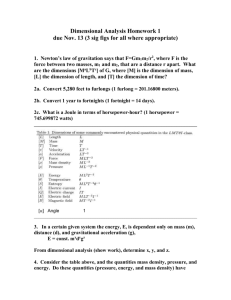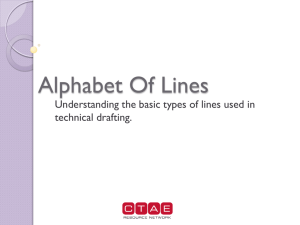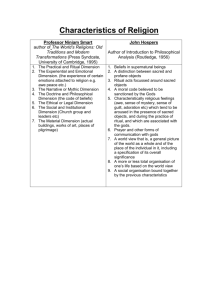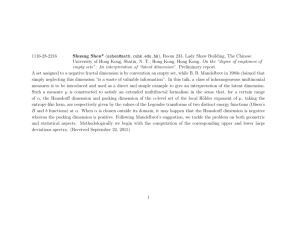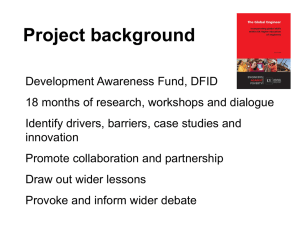The Global Dimension and MFL
advertisement
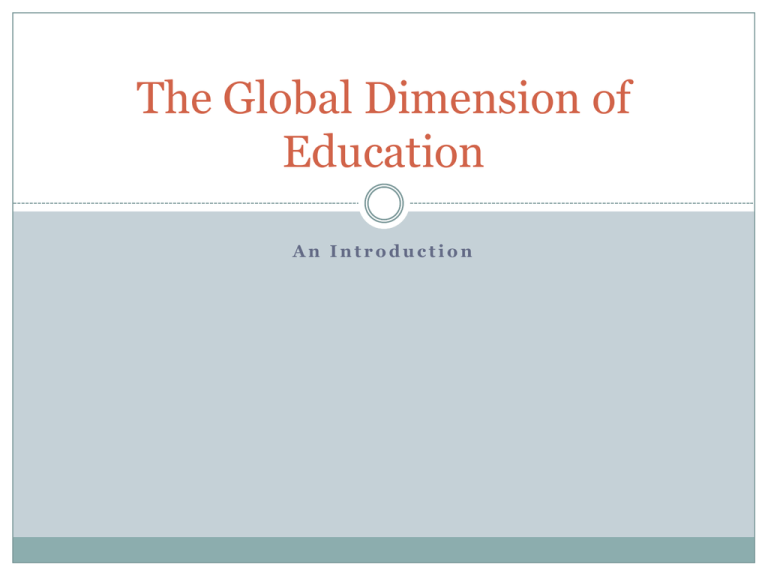
The Global Dimension of Education An Introduction The Context In the next 10 minutes: 60 babies will be born in the US 244 babies will be born in China 351 babies will be born in India Exponential Times The top 10 in demand jobs in 2010 did not exist in 2004 1 out of 8 couples married in the U.S. last year met online The number of text messages sent and received every day exceeds the total population of the planet More than 3000 new books are published every day Exponential Times It is estimated that 40 exabytes (4 x 1019) of unique new information will be generated worldwide this year That is more than in the previous 5000 years More than 800 million people actively use Facebook, uploading 250 million photos a day They have an average of 130 friends and are connected to 80 community pages, groups and events (http://shifthappens.wikispaces.com/) The Opportunities More accessible travel/work destinations Wider choice of goods and services More job opportunities in the global market Instant contact with anyone around the world Fast developing technologies can improve quality of life The Problems Environmental shifts and climate change Food and water shortages Wealth gap Potential for large-scale conflict Unfair trade Economic crises (Eurozone, credit crunch) What is the Global Dimension? The global dimension explores what connects us to the rest of the world. It enables learners to engage with complex global issues and explore the links between their own lives and people, places and issues throughout the world. The global dimension can relate to both developing and developed countries, including countries in Europe. It helps learners to imagine different futures and the role they can play in creating a fair and sustainable world (QCA, 2007). 8 Key Concepts of the Global Dimension Global Citizenship - Gaining the knowledge, skills and understanding of concepts and institutions necessary to become informed, active, responsible citizens. Conflict resolution - Understanding the nature of conflicts, their impact on development and why there is a need for their resolution and the promotion of harmony. Diversity - Understanding and respecting differences and relating these to our common humanity. Human rights - Knowing about human rights including the UN Convention on the Rights of the Child. Interdependence - Understanding how people, places, economies and environments are all inextricably interrelated, and that choices and events have repercussions on a global scale. Social justice - Understanding the importance of social justice as an element in both sustainable development and the improved welfare of all people. Sustainable development - Understanding the need to maintain and improve the quality of life now without damaging the planet for future generations. Values and perceptions - Developing a critical evaluation of representations of global issues and an appreciation of the effect these have on people's attitudes and values. What now? In Spring 2012 DFID announced that it will fund a Global Learning Programme – England (GLP-E) to increase and improve the teaching and learning, at Key Stages 2 and 3, of issues related to global poverty. DFID intends for the GLP-E to run for a period of 5 years (with extension options up to a maximum of 2 years) and has allocated a budget in the range £17m to £20m for the five year period. (Think Global) Actvity What does a Global Citizen look like? Pedagogy Asking questions and developing critical thinking schools Equipping young people with knowledge, skills and values to participate as active citizens Acknowledge the complexity of global issues Revealing the global as part of everyday local life, whether in a small village or a large city Understanding how we relate to the environment and to each other as human beings (Oxfam: Education for Global Citizenship) Activity Take one of the key concepts of the global dimension. Consider ways of exploring it through your subject Plan a teaching activity using the suggested teaching methods or one of your own. Discussion What is your role in developing the global dimension of education? What support/guidance do you need? Guidance and Resources Links to practical resources and lessons www.globaldimension.org.uk www.pinterest/com/derc Share with each other!



